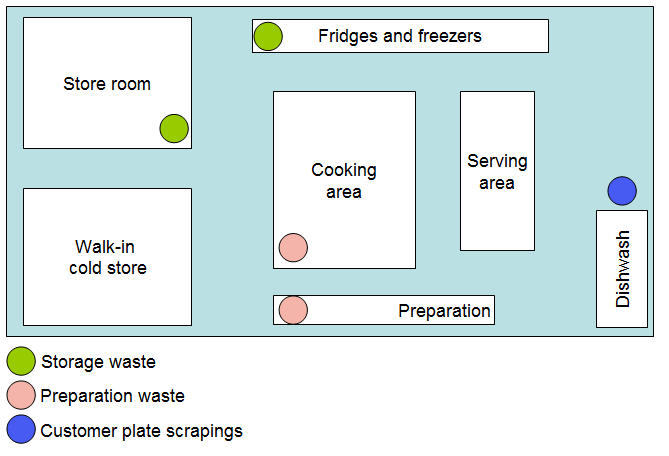How to complete a food waste audit
Conducting a food waste audit is the first step in reducing your kitchen’s waste volumes and controlling your costs. Get to grips with this vital tool to find out how much food waste you are currently generating, and where is it coming from.
By Lindsey Hall
Due to the value of the primary ingredients, food waste has a high cost associated with it, which can have a significant impact on your kitchen’s operating margins. The best strategy to control your costs is to minimise the amount of food waste you produce, and in order to do this properly you will need to start by accurately establishing your baseline: how much food waste does your kitchen currently generate?
Prepare your staff
Before you get started with your audit, make sure you’ve brought your staff up to speed with your plans! Completing a food waste audit will require your team to change their normal working practices, so if you want to get accurate results, it’s important to make your kitchen and serving staff aware of the changes that they’ll have to make. And why they’re important! Check out our blog on minimising food waste to find out more about engaging and involving your staff.
The three areas of the kitchen operation
During the audit period, you will need to substitute your single food waste bin for 3 different bins:
- For food that has spoiled in storage and can’t be used in food preparation
- For preparation waste (trimmings, peelings and food that has been impaired in preparation and can’t be served)
- For food waste from the customer’s plates
Depending on your kitchen size and setup, it may be necessary to have more than one bin for each waste type. Here’s an example set-up:

Don’t forget the waste that you would normally put down the sink or the macerator. During the audit period, this waste should also be put into the appropriate bins so that you can get a complete picture of the amount of food waste generated.
Compare wastage against business activity
Weigh the bins at the end of each shift, record the weights, and normalise them against the number of covers that were served during that period. This will enable you to easily compare your data against other periods as you move forward with your waste minimisation plans, and also to compare your waste figures against industry benchmarks. Green Steps provide customisable forms to allow you to record this data accurately and easily.
Get accurate data
It’s really beneficial to run your audit for a full week to get the best results and to see what effect, if any, the day of the week has on the amount of food waste you generate. This will also ensure that any activities that result in the generation of food waste, but occur only once a week, are captured in your audit.
Auditing waste from customers’ plates
In addition to the standard food waste audit described above, it can be very insightful to record the type of food that is coming back to the kitchen from the customer’s plates. This will help you to see if there are any issues with portion size or menu design, and enable you to reduce the quantity of food waste.
Green Steps provide customisable forms for your team to fill in, which are easy to complete in a busy kitchen environment and are simple for you to analyze.
The next step
Equipped with the data from your audit, you can now create your targets for food waste minimisation and consider what actions will help you to meet these targets. Check out our blog on minimising food waste which walks you through your next steps, or contact us for help in creating a personalised action plan.
How we can help
Green Steps are experts in food waste. Contact us today to get access to the forms and templates that will make your food waste audit a success. Alternatively, speak to us about how we can help you manage the entire process from the initial audit to prioritising the actions to take forward and ensuring that your food waste minimisation targets are met.
Tags
- food waste audit
- food waste reduction
- waste hierarchy
Share
ShareTweetPin it+1